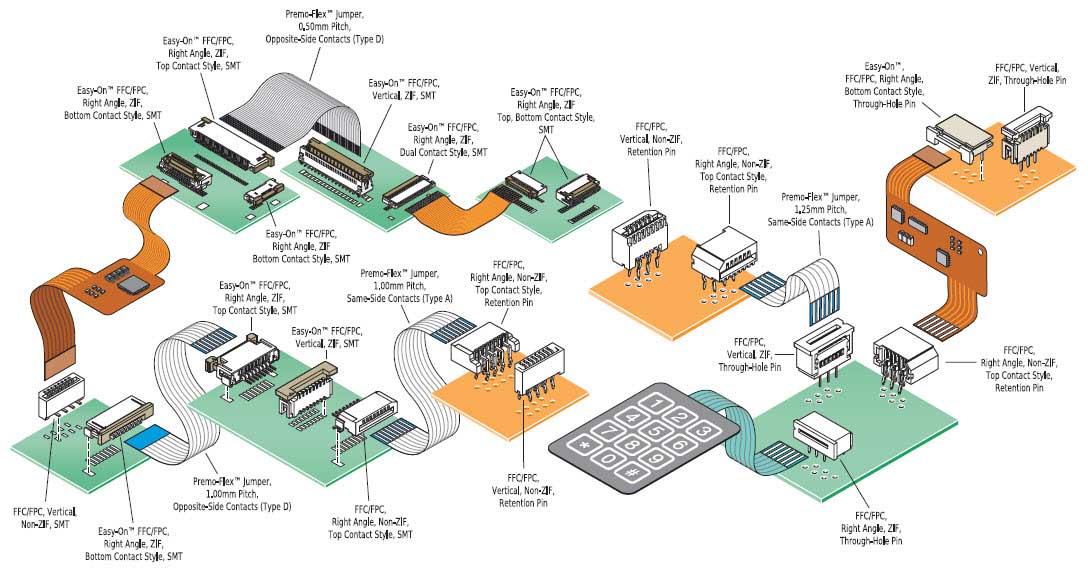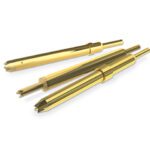Medical Trends Drive Innovation and New Technologies
The pandemic has altered the healthcare ecosystem and stimulated innovations in the medical sector. As a result, doctors and patients have new connected tools to promote health outside of the clinical setting.

Medical Trends
The COVID19 pandemic has provided us with new insights into the healthcare ecosystem and its impact on society. It has also driven innovations in medicine, accelerating the transition to telehealth and remote monitoring, and spurred the development of new lifesaving technologies. At the same time, demands on integration and performance for these technologies is increasing, requiring smaller, faster interconnects, including antennas, sensors, fiber optics, and printed circuit solutions.
When medical devices are used outside of the clinical setting, durability, functionality, usability, and security are critical design requirements. Diagnostics applications must also be convenient to move and use. At the same time, the mobile medical equipment market needs IO density, high signal integrity, and flawless telemetry to connect patients with health care providers through secure networks. These systems depend on printed circuit solutions.
“Medical is a key market for our printed circuit solutions, and we’re continually developing our manufacturing capabilities to fulfill the needs of our medical customers,” said Kylie Pessetti, marketing analyst for the printed circuit solutions business unit at Molex. “We hold an ISO 13485 certification for the design and production of medical devices which, in conjunction with our standard traceability, reporting processes, and quality systems, allows us to work with many medical customers and streamline requirements for audits. That allows us to concentrate on the product design. The end goal is to create a solution that meets all the customer’s form, fit, and function requirements and that are optimized to be produced in mass production.”

Molex’s Premo-Flex standard line of flat flexible cables, supplied by Sager Electronics, are ideal for board-to-board interconnection in confined spaces. Tin- and gold-plated standard products range from .25 to 1.25 millimeters in pitch and can contain 4 to 80 circuits.
Portable equipment and home-based health monitoring devices are often battery-enabled devices. Technological innovations and power transfer enables faster charging, brighter displays, and more dynamic power management in portable medical devices, which require excellent RF performance. Device designs must have well-designed wireless circuits and antennas. Brighter displays, higher resolution, and touchscreens have become very common.
“Architectures have become increasingly modular and utilize interconnects that are fine pitch, not only for and between displays, but between other printed circuit boards between battery or battery circuits and charging ports and IO circuits,” said Matt McWhinney, business development manager at Molex. “The need for constant reliable power drives the optimization of batteries for medical devices, for both backup and to enable portability. Batteries that have fast-charging capabilities, especially with smaller products like wearables, combined with design goals of miniaturization, drives the need for ever smaller interconnections between device components like batteries, as well as displays and the charging circuits.”

Molex SlimStack board-to-board, available from Sager Electronics, are used to connect displays printed circuit boards, and various other modules. They support high-speed data exchange and offer excellent retention with multiple locking versions to support robust interconnection requirements.
Developers are seeking ways to increase wireless performance and send data reliably between care providers and patients. One technique is to include multiple antennas, often referred to as MIMO, for Multiple Input Multiple Output. This helps ensure strong wireless connectivity. To reduce risk and ensure optimal RF performance, wireless design should be considered early in the product development process to provide more time for testing and documentation of the antennas and high-speed circuits.
The use of hybrid connectivity bridges the transition from electrical to optical product generations by combining optics and electrical contacts in a single connector housing. These products are suitable for transmitting high resolution video, data, and power in critical environments and applications, such as robotic surgery.
Increases in data rates and high resolution imagine are creating higher demand for optical cables in medical applications. Molex offers connectivity solutions with many benefits and features through extensive application use with customers. These solutions go through extensive testing to ensure they meet the performance requirements for these medical applications. Some of these features are long-term flexibility cabling, high mate and de-mate cycling, crush-proof constructions, and low maintenance plug/play ferrule interfaces.
Along with an all-optical interface, Molex has created hybrid solutions that mix optical signals with copper signal or power. These solutions help support more complex applications and also help support a much easier solution in the medical application as it reduces setup time and eliminates multiple cable requirements in many already crowded equipment panels. To further extend these hybrid solutions Molex is mixing other applications like suction or pressure with medical grade tubing or supporting 4K or 8K video solutions with active optical cables in HDMI or USB interfaces. These solutions create an extremely well rounded portfolio of products and capability.
Wireless technology can rely on Bluetooth or cellular, depending on how much data needs to be transmitted, how far it needs to be transmitted, or how frequently. For instance, Wi-Fi might make sense, but you may want to consider which bands have Wi-Fi, which frequencies you want to use, and if there may be some value in having a backup or redundant system such as LTE in the event that Wi-Fi goes down.
There are many choices to be made and many product options available to empower designers of medical equipment today. Including a trusted distributor early in the design process allows more time for questions and more flexibility in terms of options. A distributor can make recommendations on possible interconnect products for use in these life-saving systems based on design requirements, as well as availability, manufacturability, price points, and performance.
Visit Sager Electronics to see the latest solutions for medical technologies.
Like this article? Check out our other articles on cable, antennas, our Medical Market Page, and our 2022 Article Archive.
Subscribe to our weekly e-newsletters, follow us on LinkedIn, Twitter, and Facebook, and check out our eBook archives for more applicable, expert-informed connectivity content.






